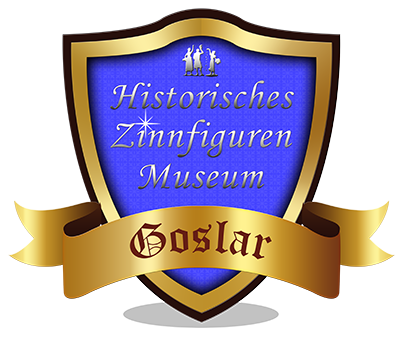Open workshop
Tin figure production
Step 1: Making the mould
After deciding on a theme, it is necessary to thoroughly research contemporary sources in order to achieve the most
accurate representation.
A scale drawing must be made of the chosenmodel, which depicts both the front and the rear view. Both of these views are engraved in a two-piece slate. These must be absolutely congruent. The dowel pins are used as support. In addition, a cast duct and air channels are engraved in the stone.
Step 2: The casting process
An alloy of tin, antimony, bismuth and, possibly, copper and lead is used as casting material. The mould is coated lightly with a glide agent (soot or talcum powder). The two mould halves must be put together.
The tin alloy is melted in a crucible and quickly filled into the casting channel using a ladle. Within minutes, the casting material becomes solid. The cast figure can then be removed from the mould with protective gloves or a pair of pliers.
Step 3: Painting the tin figure
AOnce the tin figure has cooled down, it is time to carefully remove the excess and overhangs (burrs). The figure is then degreased with soap and water.
A priming coat of synthetic enamel paint or poster paint can now be applied. The final painting step is carried out true to the model with a fine brush using artist's oil paint or acrylic paint.
